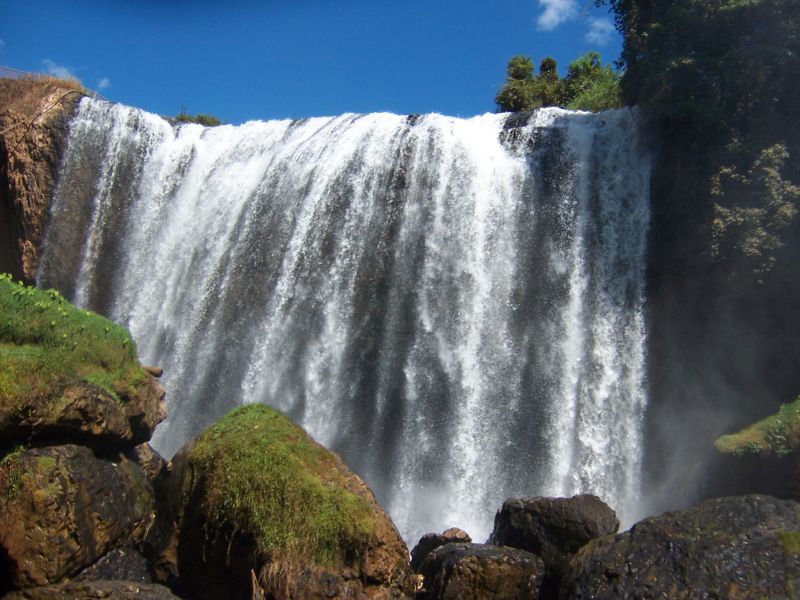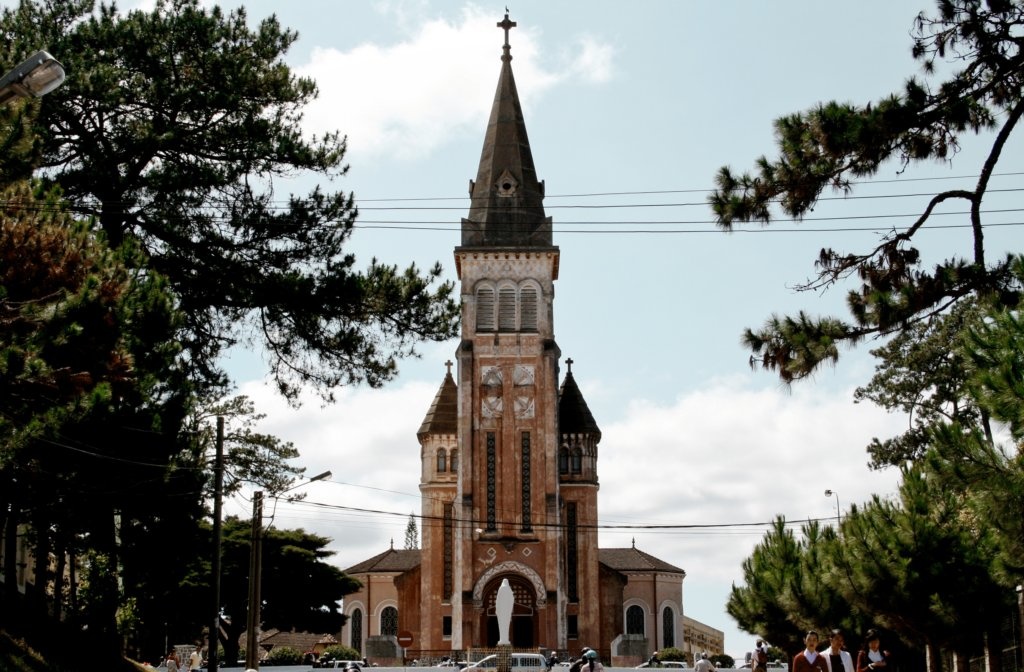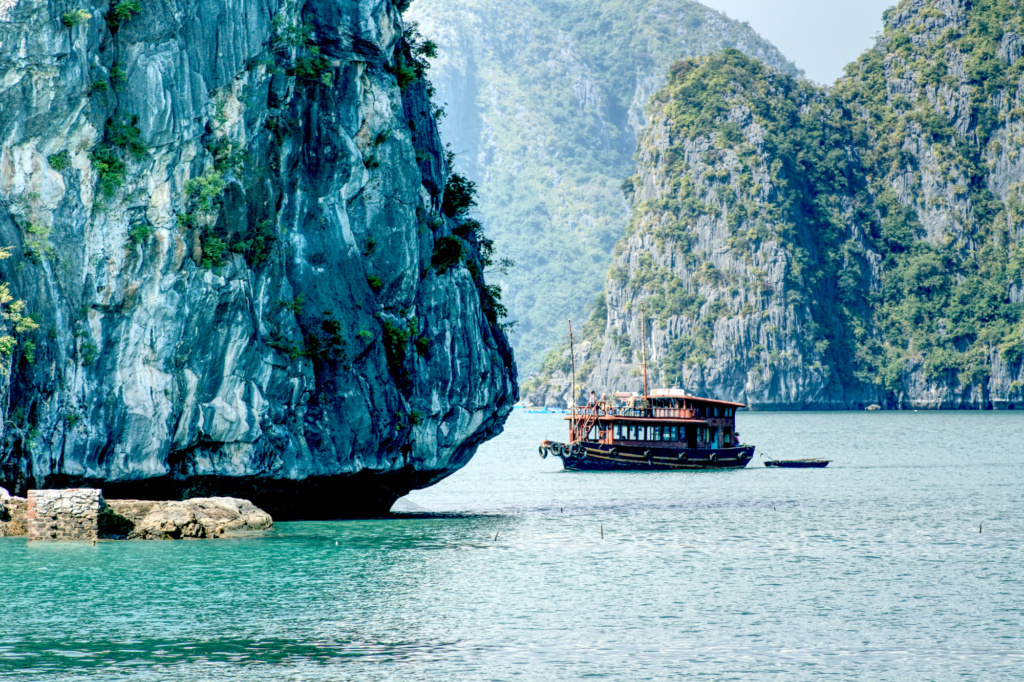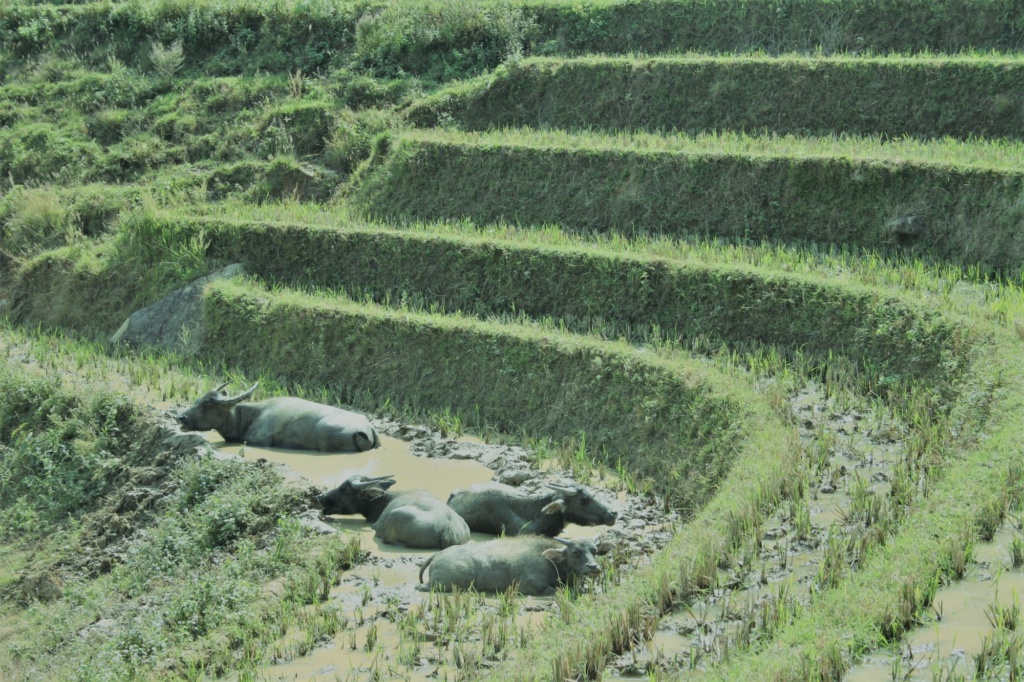Da Lat Vietnam Travel Guide A Vagabond Life
Da Lat Vietnam Travel Guide: Explore top attractions, must-see sites, and hidden gems in the beautiful highlands of Da Lat. Plan your perfect trip with our guideDa Lat, nestled in the misty highlands of Vietnam’s central region, is a unique fusion of natural beauty and colonial heritage. Established by the French in the late 19th century as a cool retreat from the tropical heat, this charming city is often referred to as the “City of Eternal Spring” for its temperate climate and floral bounty. Da Lat’s history as a luxury resort town for the colonial elite has left a lasting architectural legacy, with a picturesque blend of French colonial villas, gardens, and churches set against a backdrop of rolling hills, pine forests, and crystal-clear lakes.
Today, Da Lat is a haven for adventure seekers, nature lovers, and those in pursuit of tranquility. The city’s serene landscape is dotted with sprawling flower gardens, while its surroundings offer vast opportunities for trekking, mountain biking, and exploring waterfalls. The central market and surrounding farms provide a taste of the fresh, locally-grown produce, including the region’s famed strawberries and artichokes. For travelers looking to experience the blend of Vietnamese culture with a touch of French elegance, Da Lat presents an enchanting getaway.
Da Lat Vietnam Map: Da Lat Vietnam Travel Guide
Getting To Da Lat Vietnam: Da Lat Vietnam Travel Guide
Da Lat, often called the “City of Eternal Spring,” is a popular destination in Vietnam, known for its cool climate, stunning landscapes, and colonial charm. The city is accessible by various means, depending on your starting point.
Fly
The most convenient way to reach Da Lat is by air. Lien Khuong Airport, located about 30 kilometers south of the city, serves as the main gateway. The airport offers direct flights from major Vietnamese cities like Ho Chi Minh City, Hanoi, and Da Nang, with airlines such as Vietnam Airlines, VietJet Air, and Bamboo Airways providing frequent services. From the airport, visitors can take a taxi or shuttle bus to reach the city center.
Bus
For those preferring a scenic route, traveling to Da Lat by bus is a popular option. Buses and sleeper coaches operate regularly from Ho Chi Minh City, Nha Trang, and other nearby cities, offering a comfortable and affordable journey. The bus ride from Ho Chi Minh City to Da Lat typically takes around 6-8 hours, winding through picturesque mountain passes.
Driving to Da Lat is another option for those who enjoy road trips. The journey offers breathtaking views of Vietnam’s highlands, but the winding roa
Getting Around Da Lat Vietnam: Da Lat Vietnam Travel Guide
When it’s time to leave Da Lat, several convenient options are available depending on your next destination. The city is well-connected by road and air, ensuring a smooth departure.
For travelers heading to other major cities in Vietnam, flying from Lien Khuong Airport is the fastest option. The airport offers direct flights to Ho Chi Minh City, Hanoi, and Da Nang, making it easy to connect with onward destinations. A taxi or shuttle bus can take you from the city center to the airport in about 30 minutes, ensuring a hassle-free journey.
If you prefer to travel by road, buses are a reliable choice. Numerous bus companies operate routes from Da Lat to Ho Chi Minh City, Nha Trang, and other cities. The buses range from standard coaches to more comfortable sleeper buses, allowing for overnight travel. The scenic bus ride to Ho Chi Minh City takes about 6-8 hours, while the journey to Nha Trang is shorter, at around 3-4 hours.
For those looking for a more adventurous departure, renting a motorbike and riding through the winding mountain roads offers an unforgettable experience. You can take in the breathtaking scenery of the Central Highlands as you make your way to your next destination.
Whether by air, bus, or bike, leaving Da Lat is made easy, though the memories of this charming city will likely linger long after you’ve gone.
Things To See & Do In Da Lat Vietnam: Da Lat Vietnam Travel Guide
Ho Xuan Huong Lake - Da Lat Vietnam
Ho Xuan Huong Lake, often referred to as the “heart of Da Lat,” is a serene and picturesque landmark that epitomizes the charm of this highland city. Located in the center of Da Lat, the crescent-shaped lake spans approximately 32 hectares and is surrounded by lush gardens, pine forests, and charming French villas, creating a peaceful retreat from the bustling city life.
The lake, named after the famous Vietnamese poet Ho Xuan Huong, was originally created in the early 20th century as a reservoir by French colonialists. It quickly became a central feature of Da Lat’s urban planning, contributing to the city’s reputation as the “City of Eternal Spring.” The cool climate and tranquil waters make Ho Xuan Huong Lake a popular spot for both locals and tourists to relax and enjoy outdoor activities.
Visitors can take a leisurely stroll or bike ride along the 5-kilometer path that encircles the lake, enjoying the fresh air and scenic views. Pedal boats shaped like swans are available for rent, offering a unique way to explore the lake’s calm waters. Nearby, several cafes and restaurants provide a perfect spot to unwind with a cup of Vietnamese coffee while overlooking the lake.
Whether at sunrise, when the mist lingers over the water, or at sunset, when the sky reflects on the lake’s surface, Ho Xuan Huong Lake offers a peaceful escape and a quintessential Da Lat experience.
Bao Dai Palace - Da Lat Vietnam
Bao Dai Palace, also known as the Summer Palace, is a historic and cultural landmark in Da Lat, Vietnam. This elegant mansion was built in the 1930s as a summer retreat for Bao Dai, the last emperor of the Nguyen Dynasty and the final monarch of Vietnam. Perched on a hill surrounded by pine forests, the palace offers visitors a glimpse into the life of Vietnam’s royal family during the French colonial period.
The architecture of Bao Dai Palace is a harmonious blend of French colonial and traditional Vietnamese styles, reflecting the eclectic tastes of the era. The building itself is relatively modest in size, with two stories housing 25 rooms, each furnished with period furniture, personal items, and artifacts that once belonged to the royal family. The interiors are a mix of Art Deco and classic design, providing insight into the luxurious yet restrained lifestyle of the emperor.
The palace grounds are beautifully landscaped, with manicured gardens, flower beds, and ancient trees that enhance the tranquil atmosphere. Visitors can explore the emperor’s private quarters, including his office, bedrooms, and the dining room where he hosted dignitaries. The palace also offers panoramic views of Da Lat’s rolling hills and lush countryside.
Bao Dai Palace stands as a testament to a bygone era, offering a fascinating look into Vietnam’s royal history and the colonial influences that shaped the country. It’s a must-visit for history buffs, architecture enthusiasts, and anyone interested in the rich cultural heritage of Da Lat.
Thien Vien Truc Lam Monastery - Da Lat Vietnam
Thien Vien Truc Lam Monastery, nestled in the lush hills near Dalat, Vietnam, is a serene and spiritual retreat that offers visitors a glimpse into Vietnamese Buddhism. Founded in 1994 by the revered Zen Master Thich Thanh Tu, this monastery is one of the largest in Vietnam and a significant center for Zen practice in the country.
The journey to Thien Vien Truc Lam is as enchanting as the destination itself. Visitors often take a scenic cable car ride from Dalat, soaring over pine forests and tranquil lakes, arriving at the monastery surrounded by beautiful gardens and offering panoramic views of the surrounding landscape.
The architecture of the monastery is a harmonious blend of traditional Vietnamese design and Zen simplicity. The main hall, adorned with intricate carvings and statues of Buddha, exudes an aura of peace and reverence. Monks and nuns can often be seen practicing meditation or tending to the lush gardens that surround the monastery.
Visitors are welcome to explore the tranquil grounds, participate in meditation sessions, or simply enjoy the serenity of the environment. The peaceful atmosphere, combined with the natural beauty of the area, makes Thien Vien Truc Lam Monastery a must-visit destination for those seeking spiritual solace or a break from the hustle of everyday life.
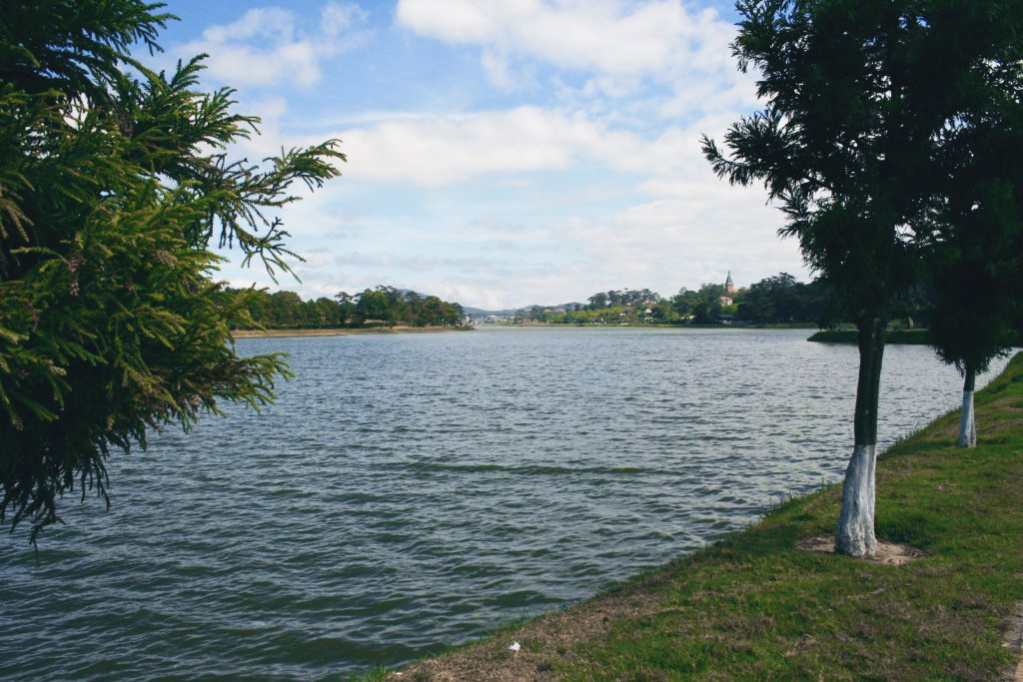
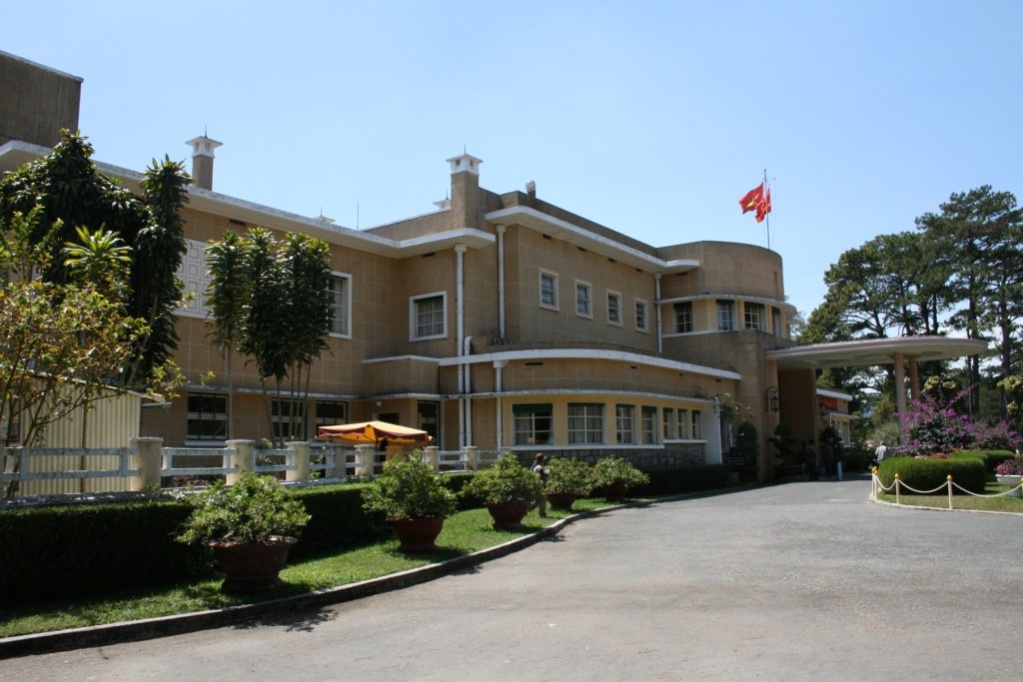
St Nicholas Cathedral - Da Lat Vietnam
St. Nicholas Cathedral, also known as Da Lat Cathedral or the Chicken Church due to the rooster-shaped weathervane atop its bell tower, is one of Da Lat’s most iconic landmarks. Built between 1931 and 1942 during the French colonial period, the cathedral reflects the architectural style of European Gothic churches, with tall, pointed arches, stained glass windows, and a soaring spire.
Situated in the heart of Da Lat, the cathedral stands as a symbol of the city’s rich history and its blend of Western and Vietnamese influences. The exterior is characterized by its striking pinkish-beige façade, while the interior is simple yet elegant, with wooden pews and an altar adorned with religious iconography. The stained glass windows, imported from France, depict scenes from the life of Jesus, adding to the cathedral’s spiritual ambiance.
St. Nicholas Cathedral serves as the main place of worship for the Catholic community in Da Lat and hosts regular masses. Visitors are welcome to attend services or explore the cathedral’s serene surroundings, including the garden and small grotto dedicated to the Virgin Mary.
Whether you’re a history enthusiast, an architecture lover, or simply seeking a peaceful place for reflection, St. Nicholas Cathedral offers a glimpse into Da Lat’s colonial past and its enduring spiritual heritage.
Elephant Falls Da Lat Vietnam
Elephant Falls, or Thác Voi as it’s known locally, is one of Da Lat’s most impressive natural attractions, offering visitors a chance to experience the raw beauty of Vietnam’s Central Highlands. Located about 30 kilometers from Da Lat in the Nam Ban Village, this powerful waterfall plunges nearly 30 meters down a rocky cliff, creating a thunderous roar as the water crashes into the pools below. The falls are surrounded by lush greenery, with jungle-covered hills providing a stunning backdrop to the cascading water.
Visiting Elephant Falls is an adventure in itself. To reach the base of the falls, visitors must navigate a steep and sometimes slippery path, winding through boulders and dense vegetation. The effort is well worth it, as the view from below offers a breathtaking perspective of the waterfall’s sheer power and beauty. The mist from the falls creates a refreshing atmosphere, and the sight of the water crashing down is both awe-inspiring and humbling.
Nearby, the Linh An Pagoda adds to the experience, with its large statue of the Laughing Buddha and serene surroundings providing a peaceful contrast to the roaring falls. Elephant Falls is a must-visit for nature lovers and adventure seekers, offering a glimpse into the untouched beauty of Da Lat’s countryside.
